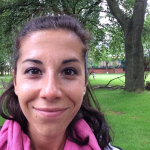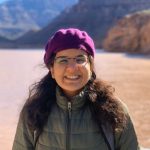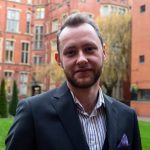
Giuliana Clemente
I am currently a postdoctoral researcher at the University of Manchester in the lab of Dr Thomas Millard. My research goal is to define mechanism(s) of cell migration and routing in complex in vivo settings using the humble yet powerful fruit fly.
I completed my pre-doctoral studies at the University of Dundee (Scotland) under the supervision of Professor Arno Müller. During my PhD, being fascinated by cytoskeleton dynamics during cell division and cell migration, I contributed to the characterisation of the mitotic and post-mitotic functions of Drosophila Spindly.
Preprint peer review enhances undergraduate biology students’ disciplinary literacy and sense of belonging in STEM
Reinier Prosee et al.
The Drosophila anterior-posterior axis is polarized by asymmetric myosin activation
Giuliana Clemente
Mitophagy protects beta cells from inflammatory damage in diabetes
Giuliana Clemente
Cell clusters adopt a collective amoeboid mode of migration in confined non-adhesive environments.
Giuliana Clemente
Polarized endosome dynamics engage cytosolic Par-3 and dynein during asymmetric division
Giuliana Clemente
Macrophages transfer mitochondria to sensory neurons to resolve inflammatory pain
Giuliana Clemente
Modulation of neuronal resilience during aging by Hsp70/Hsp90/STI1 chaperone system
Giuliana Clemente
A conserved MFS orchestrates a subset of O-glycosylation to facilitate macrophage dissemination and tissue invasion
Giuliana Clemente
PIKfyve/Fab1 is required for efficient V-ATPase and hydrolase delivery to phagosomes, phagosomal killing, and restriction of Legionella infection
Giuliana Clemente
Aurora A depletion reveals centrosome-independent polarization mechanism in C. elegans
AND
Centrosome Aurora A gradient ensures a single PAR-2 polarity axis by regulating RhoGEF ECT-2 localization in C. elegans embryos
Giuliana Clemente
A novel mechanism of gland formation in zebrafish involving transdifferentiation of renal epithelial cells and live cell extrusion
Giuliana Clemente
Human macrophages survive and adopt activated genotypes in living zebrafish
Giuliana Clemente
CellBio 2022 – An ASCB/EMBO Meeting
This preLists features preprints that were discussed and presented during the CellBio 2022 meeting in Washington, DC in December 2022.
| List by | Nadja Hümpfer et al. |
ASCB | EMBO Cell Bio *virtual* 2020
Preprints + open discussions related to work presented at Cell Bio 2020 in December
| List by | Dey Lab et al. |












